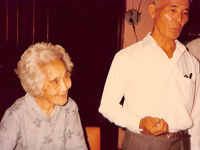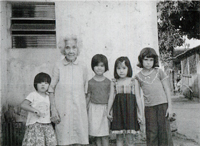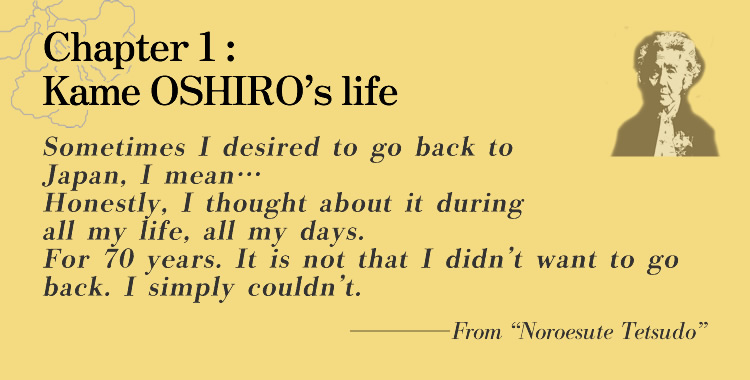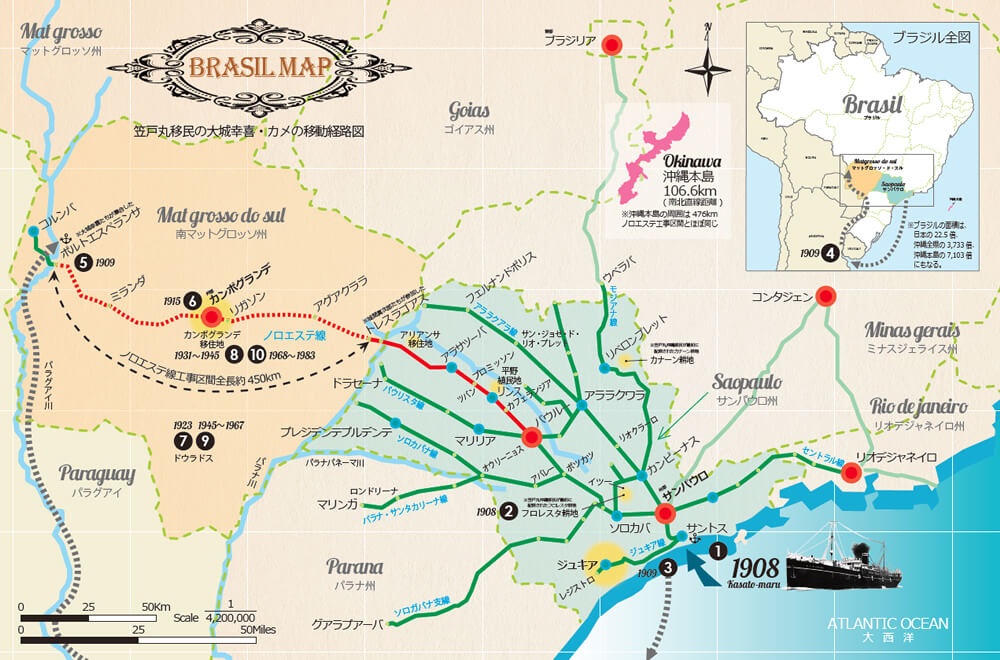01. Mr. and Mrs. OSHIRO Timeline
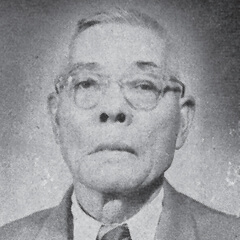
03/03/1889 - 20/12/1967
Ueta (former Kikumine), Tomigusuku-shi
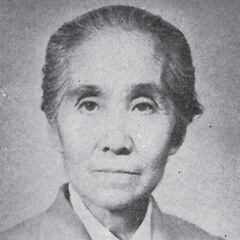
05/07/1891 - 24/01/1983
Ueta (former Kikumine), Tomigusuku-shi
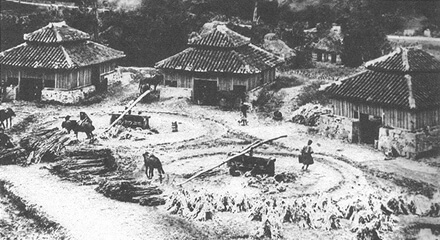
Source: SHASHIN-SHU OKINAWA (Okinawa Photo Collection)
| Date | Kame Age | Event |
|---|---|---|
| March 3, 1889 | - - - | Koki, third son of Takeo OSHIRO is born |
| July 5, 1891 | - - - | Kame, first daughter of Chikahito OSHIRO, is born |
| February 1908 | 17 years old | Marriage ( Koki at 19 years old and Kame at 17) |
| - - - | - - - | Decide for emigrating to Brazil by relatives advise, signing a contract with the Migration Company |
| April 14 | - - - | Departure from Naha port on the KAGOSHIMA YUSEN ship “KANAZAWA-MARU”, heading to Kobe. |
| April 28 | - - - | Departure from the Kobe Port of the first emigrants ship to Brazil, KASATO-MARU |
| June 18 | - - - | Arrival of KASATO-MARU to the port of Santos, Brazil |
| End of June | - - - | Entering in a large coffee farm (Fazenda Floresta) after passing through the Inn of Immigrants of São Paulo |
| until December | - - - | Among many farm escapees, Koki OSHIRO's family (including the arranged family) works until the end of the contract |
| Around January 1909 | - - - | They work at another large coffee farm (Fazenda Campo Neto) in the vicinity of Fazenda Floresta. |
| Around March | - - - | Koki, upon learning about the high remuneration of the railroad workers, he goes to Santos to make the contract |
| August | 19 years old | Koki arrives at Porto Esperança of the State of Mato Grosso, going up the La Plata River through Argentina, taking 26 days. |
| - - - | - - - | Koki works as a leader of a team of the railroad construction workers. |
| March 1908 | - - - | Kame joins the construction of the railway as a worker and responsible for the kitchen |
| Around 1911 | 20 years old | Their cousin contracted malaria and dies, despite taking him to Argentina to be treated |
| - - - | - - - | During the 7 years as railroad construction workers, they lost 2 children, with consecutive abortions |
| 1915 | 24 years old | After quitting the railroad construction worker, they started working as contractors of producing dormants and firewood in Campo Grande region. |
| - - - | - - - | He succeeded in having hundreds of employees and carts, becoming famous as the, “Great Contractor OSHIRO”. |
| 1923 | 32 years old | After great loss in business, they move to Dourados and begins to work with agriculture |
| 1931 | 40 years old | They succeeded in growing coffee and manufacturing pinga (a Brazilian distilled alcoholic beverage), but the business fails due to the effects of the 1929 crisis. |
| - - - | - - - | Koki is affected by a serious illness, but thanks to the help of Okinawans, he is admitted to the hospital in a city of Campo Grande. |
| - - - | - - - | They start a trade of buying and selling various products in Campo Grande |
| 1938 | 47 years old | They start a miscellaneous shop, NIPPON SHOTEN in Campo Grande. |
| August 20, 1942 | 51 years old | They lose all their property in an anti-Japanese riot of students that set fire to his shop. |
| From August 1945 | - - - | Koki joins the organization of “The Victorious”, SHINDO RENMEI, becoming the leader of the Campo Grande branch. |
| - - - | - - - | Koki is affected by an eye disease, while Kame and their daughter, Yoshiko support the house with sewing work. |
| - - - | - - - | Daughter Yoshiko dies from overwork. |
| - - - | - - - | Move back to Dourados |
| December 20, 1967 | 76 years old | Koki dies after a long period treating his illness. |
| 1968 | 77 years old | The Japanese government sends Kame the KUN ROKUTO ZUIHOSHO (6th class Order of the Sacred Treasure award) in the celebration of the 60th anniversary of emigration. |
| May 18, 1978 | 87 years old | Kame is interviewed by Tatsuhiro OSHIRO |
| January 24, 1983 | 92 years old | Kame dies. |
02.Paths of Koki and Kame Oshiro
03. Last years of Kame OSHIRO's life
The event that completely changed the life of Mr and Mrs OSHIRO was the fire caused by the anti-Japanese riot in 1942, when they lost all the property they had built until then. "I have no more motivation to start over" were the words confessed by Koki to Kame. Disillusioned, he may have dedicated himself to the SHINDO RENMEI for considering Japanese victory as his last hope. Koki’s sight became affected so Kame and their daughter Yoshiko took care of the house's livelihood, but shortly thereafter, Yoshiko died at a young age. And, Mr. and Mrs. OSHIRO go on to lead a quiet life again in Dourados, located south of Campo Grande. Mr. and Mrs. OSHIRO had 13 children, but the only one who survived was Yoshinori, the last to be born. Despite these difficulties, Mr. and Mrs. OSHIRO sent money to Okinawa several times and as Kame knew how to write, because she finished the gym, she sent letters to Okinawa. In the letters, she did not write about her difficult situation and it seems that there is only record of texts that showed concern about her relatives in Okinawa. Hatsu, her niece who resides in Okinawa, recalled a poem written in a letter from Kame. In the interview that Kame gave at her eighties "I can not forget my father crying when he came to say goodbye to me at the port of Naha" she recalls. Having contributed to the Okinawan community of Brazil, she was admired by many Okinawans and died at the age of 92 on January 24, 1983 without being able to fulfill her dream of returning to Okinawa.
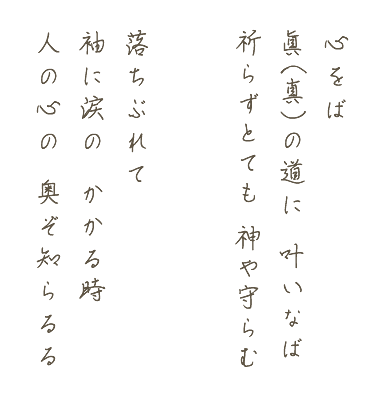
KOKORO WO BA / MAKOTO NO MICHI NI/ KANAI NABA/ INORAZU TOTEMO/ KAMI YA MAMORAN/ (If the heart follows the path of truth, even without prayer, God protects)
OCHIBURETE/ SODE NI NAMIDA NO/ KAKARU TOKI/ HITO NO KOKORO NO/ OKU ZO SHIRARERU/ (When in misery your tears wet the sleeves, you will know what is deep in people's heart)
The poems were written in the letter of Kame OSHIRO.
source: TOMIGUSUKU-SHISHI DAI 4KAN IMIN HEN (The History of Tomigusuku City Vol 4 Book of Migration)
